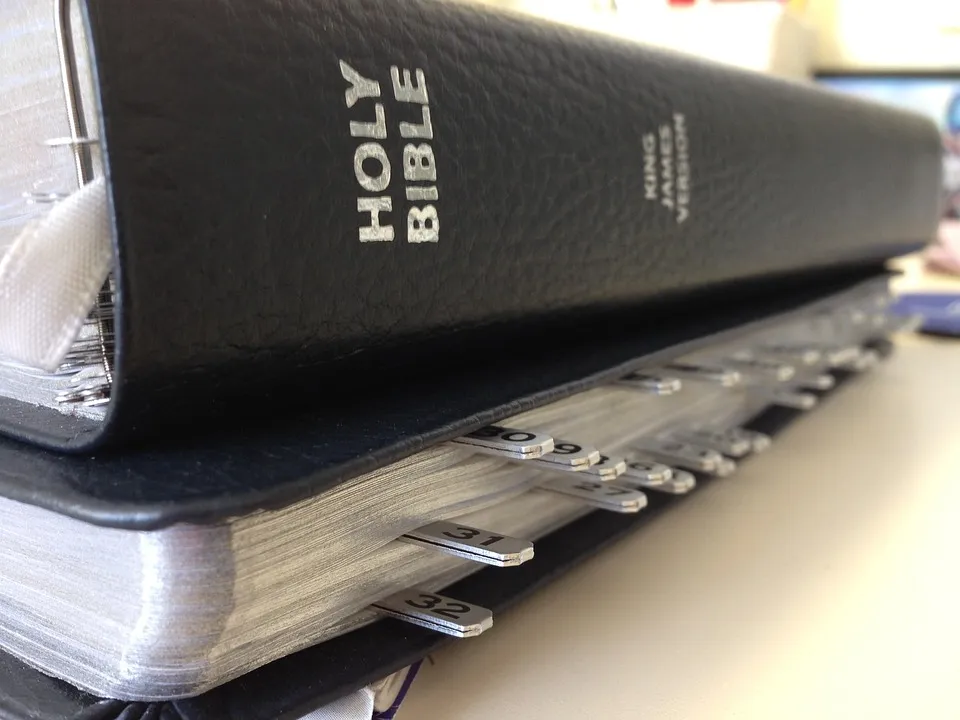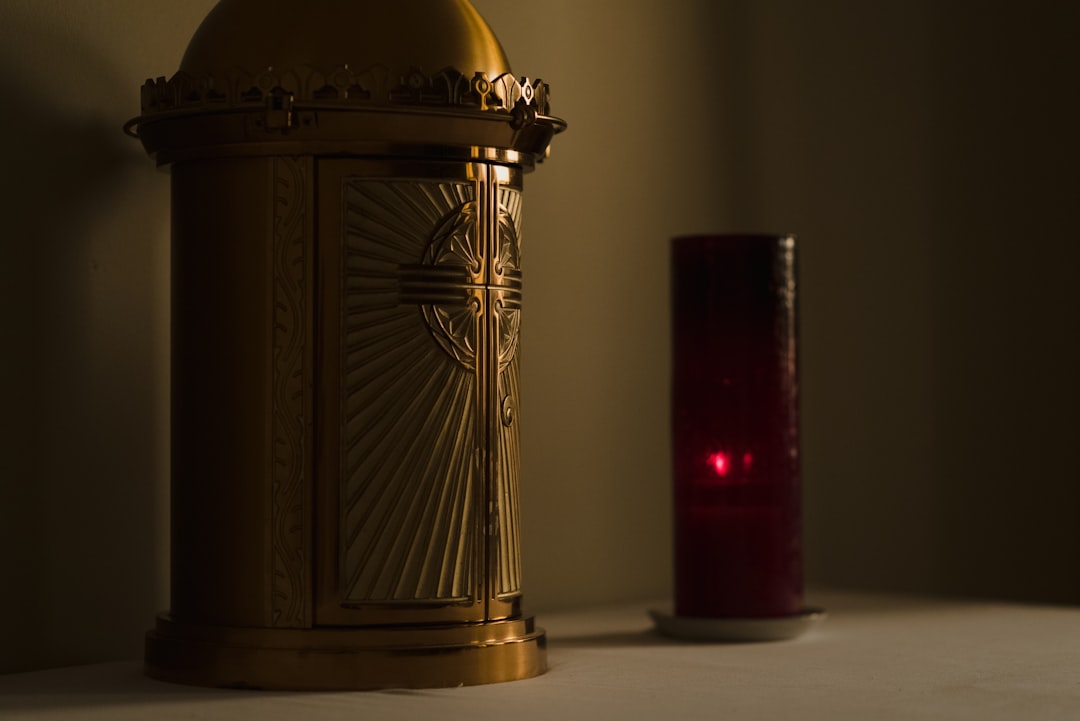The Tent of Meeting was a significant structure in the Old Testament. It was a portable sanctuary where the Israelites worshipped and offered sacrifices to God. The tent played a crucial role in the Israelites’ journey and was the dwelling place of God’s presence among them. In this article, we will explore the history, meaning, and significance of this fascinating structure and learn how it relates to our faith today. Read on to discover more about the Tent of Meeting.
Introduction to the Tent of Meeting

Welcome to a journey through the Tent of Meeting, one of the most significant structures described in the Bible. Also called the Tabernacle, the Tent of Meeting was constructed by Moses and the Israelites during their journey to the Promised Land after their miraculous exodus from Egypt. The Tent of Meeting was a portable sanctuary that allowed the Israelites to regularly meet with God and offer sacrifices to Him.
This holy structure was constructed in a very detailed way, from the curtains to the inner court and outer court. In fact, the construction of the Tent of Meeting is described in great detail in the Book of Exodus, chapters 25-40. Assembling the Tent of Meeting required certain materials: gold, silver, bronze, acacia wood, and finely spun linen. The craftsmen who constructed the Tent of Meeting were also required to be skilled in embroidery and weaving. The Tent of Meeting was a masterpiece.

The Tent of Meeting served as a symbol of God’s presence among His people. When the Tent of Meeting was set up, a cloud appeared above it, and within the cloud was the glory of God. The Tent of Meeting was the meeting place between God and His people, where the Israelites worshipped and offered their sacrifices.
The Tent of Meeting was also divided into two main parts: the inner court and the outer court. The inner court was where the Ark of the Covenant was kept, and only the High Priest was allowed to enter this area. The Ark of the Covenant contained the tablets that Moses received from God on Mount Sinai, as well as other sacred items.
The outer court was where the Israelites could come and offer their sacrifices. There were dimensions to the Tent of Meeting that were not to be altered. Curtains guarded the entrance to the outer court, where the Israelites brought their offerings to the bronze altar. They could also use a bronze basin to cleanse themselves before entering the Tent of Meeting. The priesthood was established through special consecration that involved anointing oil and incense.
To summarize, the Tent of Meeting was more than just a physical structure. It was the place where the Israelites could come and meet with God, offer their sacrifices, and receive forgiveness for their sins. The Tent of Meeting played a crucial role in the life of the Israelites, as it was a constant reminder of God’s presence among them. We will delve deeper into the details of the Tent of Meeting in the following sections, so stay tuned!
The Construction of the Tent of Meeting
The construction of the Tent of Meeting, also known as the Tabernacle, was a significant event in the history of the Israelites as it represented God’s presence among them. According to the book of Exodus, God gave Moses a detailed plan for the construction of the Tent of Meeting while he was on Mount Sinai.
The Tent of Meeting was made of a durable and waterproof material known as acacia wood. It has an inner court and an outer court separated by a veil. The dimensions of the Tent of Meeting were precisely specified by God to Moses. The structure was 30 cubits long, ten cubits wide, and ten cubits high.
The inner court of the Tent of Meeting was where the Ark of the Covenant was placed. The Ark of the Covenant was a gold-covered wooden chest that contained the stone tablets with the Ten Commandments. The Ark was considered to be the most sacred object in the Tent of Meeting. It was believed to be the place where God’s presence was most profoundly felt by the Israelites.
The outer court of the Tent of Meeting was where the furnishings were located. There was a bronze altar for burnt offerings, a bronze basin for washing, and a large bronze altar for sweet-smelling incense. There were also various other items such as curtains, pillars, and utensils made of gold and silver.
The construction of the Tent of Meeting was a significant undertaking that required the contribution of the Israelites. The people were asked to bring offerings such as consecration, anointing oil, spices, and precious metals to help construct and furnish the Tent of Meeting. Moses was responsible for overseeing the construction, and the Levites were responsible for assembling the Tent of Meeting and its furnishings.

The construction of the Tent of Meeting was a long and tedious process. It took nearly a year for Moses and the Israelites to build and furnish the Tent of Meeting. However, once it was completed, it became the central place of worship and sacrifice for the Israelites.
In conclusion, the construction of the Tent of Meeting was a significant event in the history of the Israelites. The Tent of Meeting was where God’s presence was felt the most profoundly, and it played a vital role in the Israelite’s worship and sacrifice. The construction of the Tent of Meeting required the contributions of all the Israelites, and it took nearly a year to complete. The Tent of Meeting was a tangible reminder of God’s presence among the Israelites.
The Furnishings of the Tent of Meeting
As we continue to explore the significance of the Tent of Meeting in the Bible, it is important to take a closer look at the furnishings of the tent.
-
The Ark of the Covenant – The most important item in the Tent of Meeting was the Ark of the Covenant. It was a wooden box overlaid with gold that contained the tablets of the Ten Commandments, a jar of manna, and Aaron’s rod. The lid of the ark had two cherubim, representing the presence of God.
-
The Table of Showbread – This table was made of acacia wood and overlaid with gold. It held twelve loaves of bread, which represented the twelve tribes of Israel. The bread was replaced every Sabbath day.
-
The Golden Lampstand – The lampstand was made of pure gold and had seven branches. Each branch had a lamp that was kept lit continuously. It represented the light of God that shines in the darkness.
-
The Altar of Incense – This altar was used to burn incense, creating a sweet fragrance that rose up to God. It was made of acacia wood and overlaid with gold.
-
The Bronze Basin – This basin was used for washing before entering the Tent of Meeting. It was made of bronze and filled with water.
All of these furnishings had specific purposes and meanings in worship and sacrifice. The ark represented the presence of God, the table of showbread represented God’s provision, the lampstand represented God’s light, and the altar of incense represented the prayers of the people rising up to God. The bronze basin represented the need for cleansing before entering God’s presence.
It is important to note that these furnishings were not just decorative, but were used in the daily worship and sacrifices of the Israelites. They were a reminder of God’s presence and holiness, and they served as a way for the people to approach God in humility and reverence.
As we reflect on the significance of the furnishings of the Tent of Meeting, we can see how they point to God’s character and love for his people. They remind us of the importance of worship and sacrifice in our own lives, as we approach God with humility and reverence.
« Understanding the Role of a Pastor Emeritus in Church Leadership
The Journey from Spiritual Blindness to Enlightenment »
Next, we will explore the role of the High Priest in the Tent of Meeting and how it relates to our own spiritual lives.
The Significance of the Tent of Meeting in Worship and Sacrifice
The Tent of Meeting, also known as the tabernacle, was a central part of worship and sacrifice for the Israelites during their journey through the wilderness as described in the Book of Exodus. It was a sanctuary where God’s presence could be experienced and where offerings and sacrifices were made in accordance with His instructions.
The inner court of the Tent of Meeting was where the Ark of the Covenant rested, representing God’s presence. The outer court, where the altar and bronze basin were located, was where offerings and sacrifices were made. The curtains and veil that separated the inner and outer courts were adorned with cherubim and made of fine linen, symbolizing the holiness of the space.
The priesthood was responsible for carrying out the rituals and sacrifices in the Tent of Meeting. The High Priest was the only one authorized to enter the inner court, and only on specific occasions after undergoing a process of consecration and anointing with oil. The other priests maintained the space and assisted with sacrifices.

Offerings and sacrifices were made on a daily, weekly, and annual basis in the Tent of Meeting. These included burnt offerings, meal offerings, and sin offerings. The Day of Atonement was the most significant annual event, during which special sacrifices and ceremonies were carried out to symbolize the forgiveness of sins.
The sacrifices and offerings in the Tent of Meeting were not just empty rituals, but reminders of the covenant between God and His people. They were meant to express gratitude, worship, and repentance, and to be a way for the people to draw closer to God.
The construction and use of the Tent of Meeting had great significance for the Israelites, both in terms of their relationship with God and their identity as a people. It demonstrated God’s desire to dwell among His people and the importance of holiness in worship. The Tent of Meeting reflected the Israelites’ commitment to following God’s instructions and their willingness to make sacrifices in obedience to Him.
In the New Testament, the Tent of Meeting is referenced as a foreshadowing of the coming of Jesus Christ, who is the ultimate expression of God’s presence among His people. The book of Hebrews draws comparisons between the priesthood and sacrifices in the Tent of Meeting and the sacrifice of Jesus on the cross.
Today, the Tent of Meeting serves as a reminder of God’s love for His people and the importance of worship and sacrifice. It also serves as a symbol of the unity and identity of the community of believers who continue to draw near to God through Christ.

The Role of the High Priest in the Tent of Meeting
In the Tent of Meeting, the High Priest played a crucial role in leading the people in worship and sacrifice. The High Priest was responsible for performing the rituals and sacrifices that were necessary to maintain the holiness of the sanctuary and to honor God’s presence.
Here are some of the key responsibilities of the High Priest in the Tent of Meeting:
-
Consecration: The High Priest was required to be consecrated before he could serve in the Tent of Meeting. This involved a process of purification, anointing with oil, and dressing in the priestly garments.
-
Offering Sacrifices: The High Priest was responsible for offering the daily sacrifices in the inner court of the Tent of Meeting. These sacrifices were intended to ask for God’s forgiveness and to maintain the spiritual purity of the people.
-
Atonement: Once a year, on the Day of Atonement (Yom Kippur), the High Priest was responsible for making atonement for the sins of the people. This involved a complex ritual of sacrifice and purification that was intended to cleanse the sanctuary of sin and restore the people’s relationship with God.
-
Intercession: The High Priest also served as an intercessor between the people and God. He would pray for the forgiveness and blessing of the people, and would offer incense on the golden altar to symbolize the prayers of the people rising to God.
The role of the High Priest in the Tent of Meeting was a crucial one, as it ensured that the people were able to maintain their spiritual purity and honor God’s presence in their midst. His leadership and guidance in worship and sacrifice were essential for the people to maintain their relationship with God.
Overall, the Tent of Meeting was a central place of worship for the Israelites, and the role of the High Priest was integral to their worship practices. Through his leadership and guidance, the people were able to maintain their spiritual purity and honor God’s presence in their midst.
The Tabernacle and the Tent of Meeting in the New Testament

The significance of the Tent of Meeting in the Bible is not limited to the Old Testament. In fact, the New Testament also references the Tabernacle and the Tent of Meeting in its teachings.
One of the most significant mentions of the Tabernacle in the New Testament is in the book of Hebrews. In chapter 9, the author describes the high priest entering the Holy of Holies in the Tabernacle once a year to make atonement for the sins of himself and the people. The author goes on to explain how this sacrificial system was just a foreshadowing of the ultimate sacrifice, Jesus Christ.
The author of Hebrews also compares the Tabernacle to heaven itself, saying that the earthly Tabernacle was just a copy and a shadow of the true heavenly sanctuary. This demonstrates the importance of the Tabernacle in the symbolism and imagery of the Bible.
Furthermore, the Tent of Meeting and its furnishings are referenced in the book of Revelation. The apostle John sees a vision of the heavenly throne room, which is described in language very similar to the Tabernacle. The veils, cherubim, and altar of incense are all present in this description, emphasizing the continuity between the Old and New Testaments.
Overall, the Tabernacle and the Tent of Meeting hold great significance in both the Old and New Testaments of the Bible. They serve as powerful symbols of God’s presence, holiness, and love for his people. The ultimate fulfillment of their purpose is found in the sacrifice of Jesus Christ, who made a way for us to enter into the holy presence of God.
Conclusion

In conclusion, the Tent of Meeting, also known as the Tabernacle, was a holy sanctuary that served as a meeting place between God and the Israelites during their time in the wilderness. The construction of the Tent of Meeting, as well as its furnishings, was intricately designed to reflect the holy nature of God and the need for reverence in approaching Him.
The Tent of Meeting played a significant role in worship and sacrifice for the Israelites. Through offering sacrifices and offerings in the Tent of Meeting, the Israelites were able to consecrate themselves to God and seek His forgiveness for their sins. The High Priest played a vital role in the Tent of Meeting, acting as a mediator between the people and God.
In the New Testament, the significance of the Tent of Meeting was fulfilled through the coming of Jesus Christ, who became the ultimate sacrifice for our sins and the perfect mediator between us and God. However, the Tent of Meeting remains significant for Christians today as we seek to approach God with reverence and awe.
Overall, the Tent of Meeting serves as a beautiful reminder of the holy and loving nature of God and the importance of approaching Him with humility and gratitude. As we reflect on the construction, furnishings, and significance of the Tent of Meeting, may we be reminded of God’s presence in our lives and seek to honor Him through our worship and daily lives.
In summary, the Tent of Meeting was a sacred sanctuary and a symbol of God’s holy presence among the Israelites. Its construction, furnishings, and significance were all intricately designed to reflect the awe-inspiring nature of God and the need for reverence in approaching Him. As Christians, we can learn from the Tent of Meeting’s significance and seek to honor God through our worship and daily lives.












